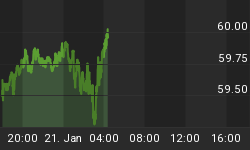Below is an excerpt from a commentary originally posted at www.speculative-investor.com on 22nd September, 2010.
An article entitled "How Hyperinflation Will Happen" has garnered a lot of attention. According to this article:
"...hyperinflation is not an extension or amplification of inflation. Inflation and hyperinflation are two very distinct animals. They look the same -- because in both cases, the currency loses its purchasing power -- but they are not the same.
Inflation is when the economy overheats: It's when an economy's consumables (labor and commodities) are so in-demand because of economic growth, coupled with an expansionist credit environment, that the consumables rise in price. This forces all goods and services to rise in price as well, so that producers can keep up with costs. It is essentially a demand-driven phenomena.
Hyperinflation is the loss of faith in the currency. Prices rise in a hyperinflationary environment just like in an inflationary environment, but they rise not because people want more money for their labor or for commodities, but because people are trying to get out of the currency. It's not that they want more money -- they want less of the currency: So they will pay anything for a good which is not the currency."
Except for the part about hyperinflation encompassing a loss of faith in the currency, the above is almost completely wrong. In particular, economies don't "overheat", economic growth causes prices to fall rather than rise, and hyperinflation is very much an extension of inflation. The author of the article doesn't even mention money-supply growth. Trying to explain inflation or hyperinflation without reference to growth in the money supply is like trying to explain why the moon orbits the Earth without reference to gravity.
All historical episodes of hyperinflation that we know of -- and we know of many -- have been step-by-step processes set in motion by, and sustained by, increases in the supply of money. After the supply of money grows at a rapid rate for a period of at least a few years, some people conclude that the inflation will be endless. These people act today in anticipation of tomorrow's money-supply-induced price rises. As time goes by, more and more people come to the realisation that the inflation will most likely be endless and begin to act (meaning: buy stuff immediately) in anticipation of future price rises, which eventually leads to the situation where prices are rising much faster than the supply of money.
At this point it would still be possible for the central bank to clamp down on the inflationary trend by stopping, or even just slowing, the expansion of the money supply, because rapidly rising prices throughout the economy would result in a money shortage unless the supply of money were given a substantial boost. At the same time, however, the central bank could be under considerable political pressure to accelerate the monetary expansion given that doing otherwise would lead to extreme short-term economic pain. This, in effect, is what happened in Germany during the early-1920s: at every step along the multi-year path from inflation to hyperinflation to the complete collapse of the currency it was deemed by the central bank to be less economically damaging to maintain or accelerate the inflation than to suddenly bring it to an end.
The point we are trying to make is that hyperinflation doesn't just happen 'out of the blue' one day when nobody expects it. Instead, it requires persistently high money-supply growth and evolves over many years due to a gradual increase in the awareness of the population. It is part of a PROCESS and definitely is an extension of inflation, but most episodes of inflation don't lead to hyperinflation because the authorities stop the monetary expansion before it's too late.
Lastly, it should be noted that while most episodes of inflation don't extend to the point where the economy experiences hyperinflation, all paper currencies eventually get inflated to oblivion. The reason is that circumstances finally arise whereby the most politically expedient move is to risk hyperinflation by continuing the monetary inflation way beyond 'normal' limits. In this regard, today's paper currencies won't be exceptions.
We aren't offering a free trial subscription at this time, but free samples of our work (excerpts from our regular commentaries) can be viewed at: http://www.speculative-investor.com/new/freesamples.html
















